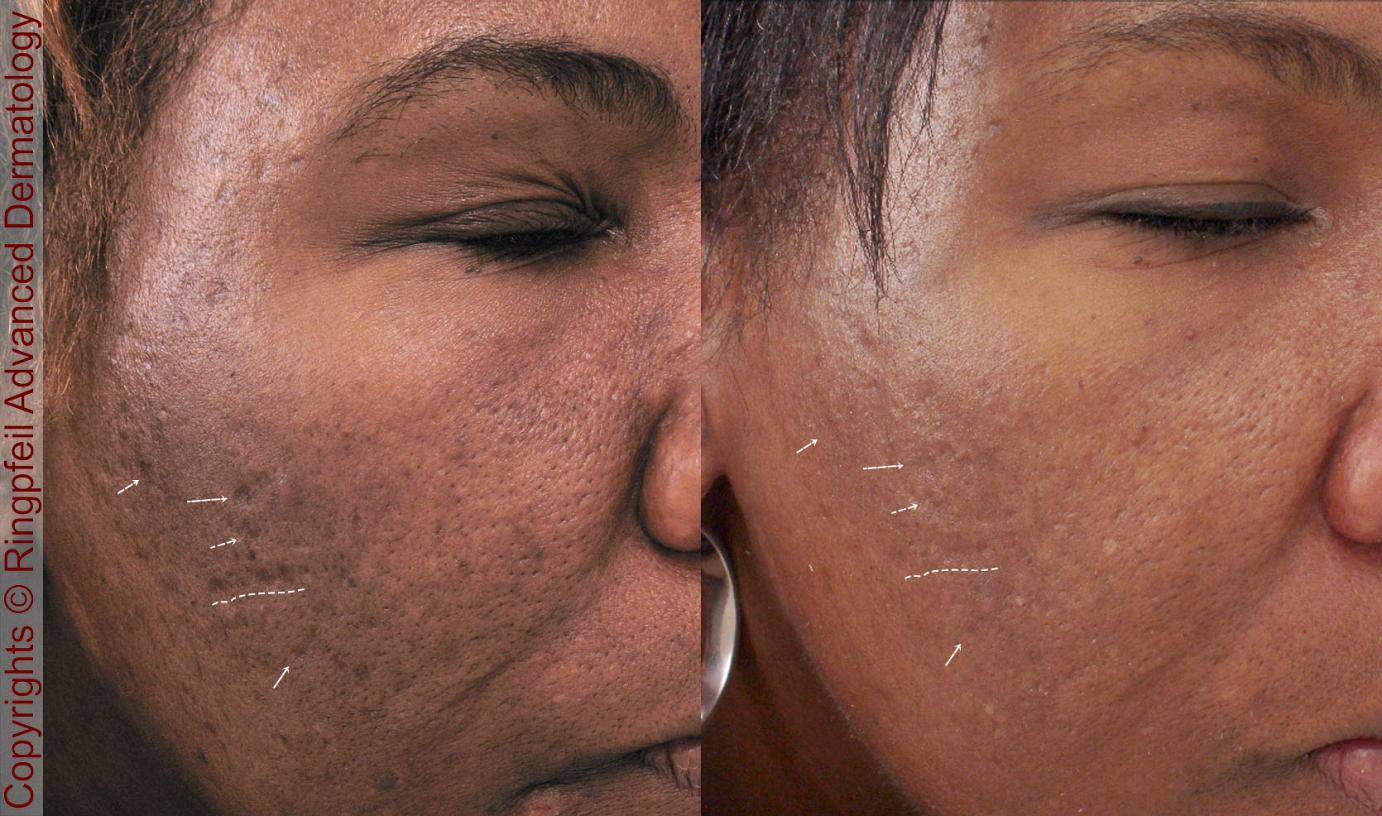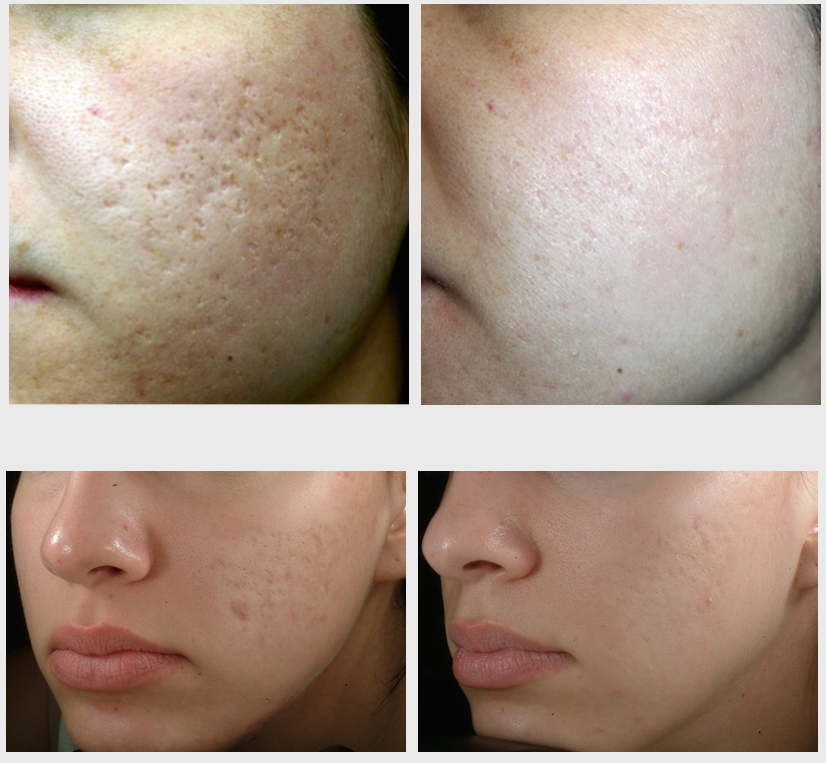Discovering Skin Conditions: Recognizing and Dealing With Acne Scars for Healthier Skin
Acne marks represent a significant issue for people looking for to maintain healthy skin, as they can influence both appearance and self-worth. Recognizing the various types of marks, from atrophic to hypertrophic, is crucial for establishing suitable treatment alternatives. While specialist treatments like chemical peels and microneedling can be reliable, the value of individualized care strategies can not be overemphasized. Moreover, preventative measures play a critical duty in minimizing future scarring. As we discover these elements, one have to consider exactly how the ideal method can cause transformative outcomes.
Recognizing Acne Scars

The body's all-natural recovery process can cause either atrophic scars, which look like clinical depressions in the skin, or hypertrophic scars, which are raised and arise from overproduction of collagen. In addition, the mental toll of acne scars ought to not be taken too lightly; lots of people report sensations of shame, stress and anxiety, and decreased self-esteem. This psychological problem can affect social communications and general lifestyle.
Addressing acne scars needs a detailed understanding of their development and effect. Understanding of the capacity for long-term effects connected with untreated marks can motivate people to seek proper therapies. Early intervention and efficient management approaches can dramatically enhance skin appearance and boost mental durability, stressing the value of understanding the complexities bordering acne scars.
Kinds of Acne Scars
Acne marks can be classified right into distinctive kinds, each showing distinct attributes and requiring specific treatment approaches. acne scars treatment. The main sorts of acne scars consist of atrophic, hypertrophic, and keloid scars

Hypertrophic marks, in comparison, are raised above the skin level and are the result of too much collagen production during the recovery process. They normally remain within the boundaries of the initial acne lesion. Keloid scars are comparable but expand beyond the original injury site, developing bigger, increased areas that can be unpleasant or itchy.
Understanding these types of scars is crucial for choosing appropriate therapy alternatives. Different scars may react much better to particular treatments, such as laser therapies, fillers, or surgical interventions, highlighting the importance of a tailored technique to acne scar administration.
Determining Your Marks
Acne scars generally drop into 2 classifications: atrophic and hypertrophic marks. These can better be classified right into ice-pick marks, boxcar marks, and rolling marks, each displaying distinctive attributes and needing different approaches for analysis.
Hypertrophic marks, on the various other hand, are increased and occur as a result of extreme collagen manufacturing throughout Resources the healing procedure. Identifying the certain features of your scars-- such as texture, deepness, and size-- is vital for proper recognition (acne scars treatment). In addition, take into consideration the circulation of marks throughout your skin, as this can indicate the seriousness and period of the acne problem
Engaging with a skin doctor can offer valuable understandings into the nature of your marks, helping in the distinction in between different types. A complete understanding of your marks will ultimately lead to a more tailored and efficient treatment plan, ensuring a clearer and healthier skin.
Therapy Options Readily Available
Recognizing the certain kind of acne scars existing on your skin lays the foundation for checking out efficient therapy alternatives. Usual types of acne marks include atrophic (clinically depressed), hypertrophic (elevated), and post-inflammatory erythema.
For atrophic scars, alternatives such as chemical peels, microneedling, and laser resurfacing are widely made use of. Chemical peels off make use of acids to eliminate the outer layer of skin, advertising new cell growth. Microneedling entails small needles that produce micro-injuries, stimulating collagen production. Laser resurfacing targets harmed skin cells, enhancing texture and tone.
Hypertrophic marks can be treated with corticosteroid injections to flatten the scar or laser therapy to minimize redness and improve appearance. Silicone gel sheets and stress dressings might additionally aid in taking care of increased scars.
Furthermore, dermal fillers can momentarily fill out anxieties from atrophic scars, while surgical excision might be ideal for extreme cases. Each treatment alternative has its factors to consider and benefits, making it necessary to speak with a skin specialist. They can supply customized suggestions based upon the type and severity of your marks, as more tips here well as your skin kind company website and overall health and wellness.
Tips for Avoidance
Efficient prevention techniques can significantly minimize the likelihood of developing acne scars. Using non-comedogenic items assists avoid blocked pores, which can worsen acne.
Preventing the urge to stand out or choose acne sores is critical, as this can result in deeper skin damage and enhance the threat of scarring. Instead, consider utilizing a cold compress or non-prescription therapies to decrease swelling and soreness.
Sun protection is one more essential aspect of prevention; ultraviolet (UV) rays can darken marks and impede the healing procedure. Applying a broad-spectrum sunscreen with a minimum of SPF 30 daily can shield the skin and promote even recovery.
Lastly, maintaining a balanced diet regimen abundant in vitamins, anti-oxidants, and minerals supports skin wellness and healing. Staying moisturized and managing tension degrees can also play a considerable function in lowering acne flare-ups. By applying these methods, individuals can dramatically decrease their chances of creating acne marks.
Verdict
In final thought, understanding and recognizing acne scars is important for reliable therapy and attaining healthier skin. Different kinds of acne marks, including hypertrophic and atrophic scars, necessitate details treatments tailored to private requirements.
The body's all-natural recovery process can result in either atrophic marks, which appear as clinical depressions in the skin, or hypertrophic marks, which are raised and result from overproduction of collagen. They are additional split right into 3 subtypes: ice choice scars, boxcar scars, and rolling scars. Acne marks usually drop right into two categories: atrophic and hypertrophic marks. These can additionally be categorized into ice-pick scars, boxcar marks, and rolling marks, each showing distinct characteristics and needing various approaches for evaluation.
Various kinds of acne marks, consisting of hypertrophic and atrophic scars, require particular interventions customized to specific needs.